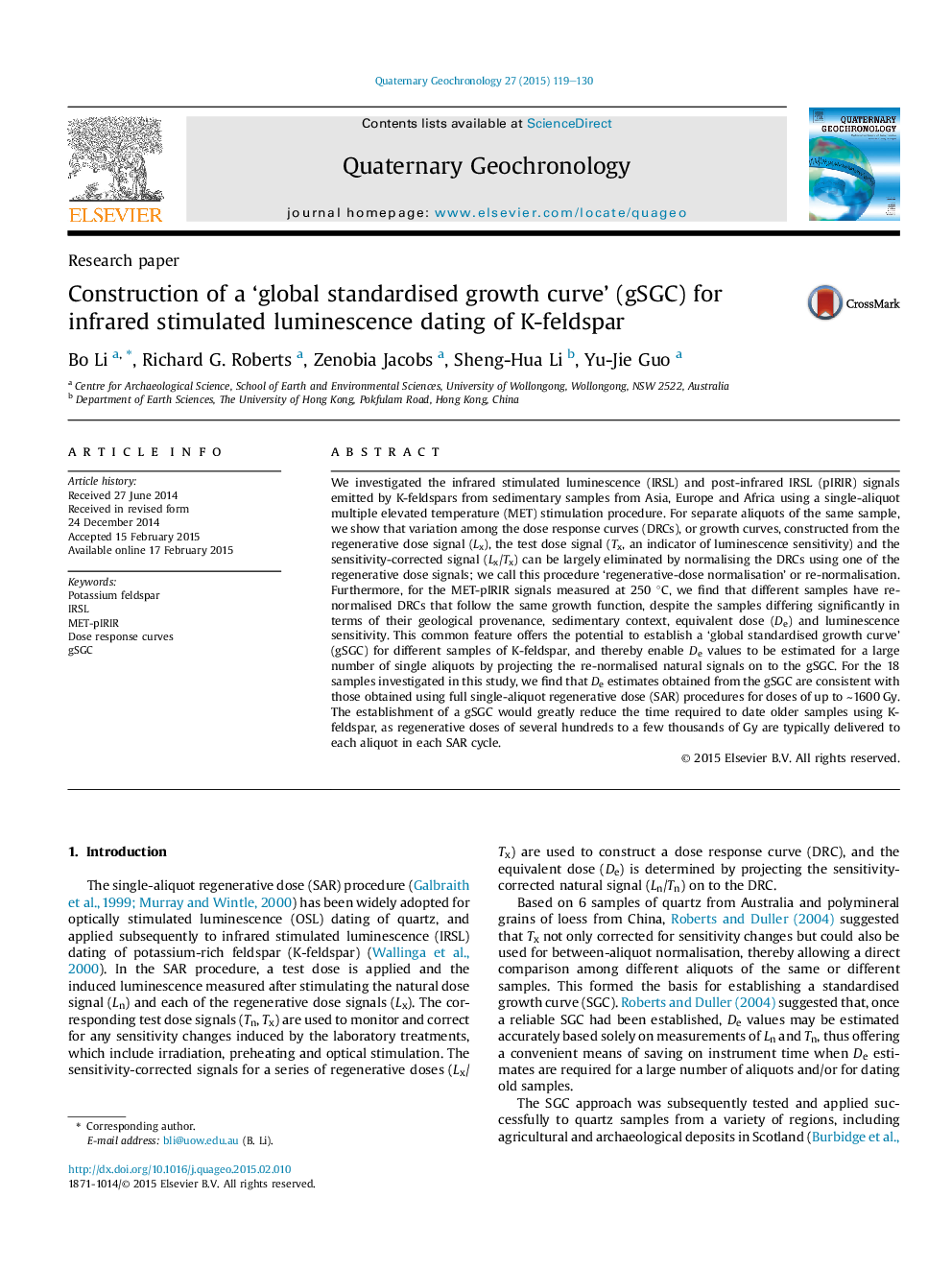| Article ID | Journal | Published Year | Pages | File Type |
|---|---|---|---|---|
| 4724933 | Quaternary Geochronology | 2015 | 12 Pages |
Abstract
We investigated the infrared stimulated luminescence (IRSL) and post-infrared IRSL (pIRIR) signals emitted by K-feldspars from sedimentary samples from Asia, Europe and Africa using a single-aliquot multiple elevated temperature (MET) stimulation procedure. For separate aliquots of the same sample, we show that variation among the dose response curves (DRCs), or growth curves, constructed from the regenerative dose signal (Lx), the test dose signal (Tx, an indicator of luminescence sensitivity) and the sensitivity-corrected signal (Lx/Tx) can be largely eliminated by normalising the DRCs using one of the regenerative dose signals; we call this procedure 'regenerative-dose normalisation' or re-normalisation. Furthermore, for the MET-pIRIR signals measured at 250 °C, we find that different samples have re-normalised DRCs that follow the same growth function, despite the samples differing significantly in terms of their geological provenance, sedimentary context, equivalent dose (De) and luminescence sensitivity. This common feature offers the potential to establish a 'global standardised growth curve' (gSGC) for different samples of K-feldspar, and thereby enable De values to be estimated for a large number of single aliquots by projecting the re-normalised natural signals on to the gSGC. For the 18 samples investigated in this study, we find that De estimates obtained from the gSGC are consistent with those obtained using full single-aliquot regenerative dose (SAR) procedures for doses of up to â¼1600 Gy. The establishment of a gSGC would greatly reduce the time required to date older samples using K-feldspar, as regenerative doses of several hundreds to a few thousands of Gy are typically delivered to each aliquot in each SAR cycle.
Keywords
Related Topics
Physical Sciences and Engineering
Earth and Planetary Sciences
Geochemistry and Petrology
Authors
Bo Li, Richard G. Roberts, Zenobia Jacobs, Sheng-Hua Li, Yu-Jie Guo,
